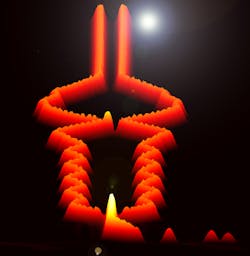Investigation with a femtosecond fiber laser finds new type of soliton ‘molecule’
Solitons are nonspreading wave packets that exist in a wide range of real-world systems, including water waves, sound, DNA, optics, and so on. Solitons behave like particles in many respects. Two or more solitons can bind together to form a soliton molecule with dynamics similar to matter molecules, such as vibration, synthesis, and dissociation. Chemical bonds account for the association of atoms into molecules, while the overlapping of soliton tails give rise to soliton molecules. The answer to a fundamental question remains elusive: how is a soliton molecule formed from interacting solitons? An answer could improve our general interdisciplinary knowledge about complex systems. Although optics has led the way in understanding soliton physics over the past decades, the formation process of soliton molecules has escaped direct experimental observations because conventional optical measurement tools are too slow to measure such a rapid process.
Scientists at East China Normal University (Shanghai, China) have now addressed this question, conducting investigations on a femtosecond fiber laser. The fast evolution from noise to a soliton molecule was captured using a dispersive Fourier-transform analysis technique. Formation processes for three types of soliton molecules were studied: ground-, excited-state, and a new one termed an intermittent-vibration soliton molecule. While it is generally believed that attractive interactions of solitons are responsible for the formation of soliton molecules, the authors found that soliton interactions are not limited to attractive interactions. Counterintuitively, even repulsive interactions can lead to the formation of soliton molecules, say the researchers. In addition, other types of soliton interactions such as vibrations and partial annihilation of solitons were found during soliton molecule formation.
The new intermittent-vibration soliton molecule, in which the distance between the solitons periodically vibrates and stabilizes, is the intermediate state between the well-known vibrational and static soliton molecules. This finding introduces a new member to the family of soliton molecules. Reference: J. Peng and H. Zeng, Laser Photonics Rev. (2018); https://doi.org/10.1002/lpor.201800009.

John Wallace | Senior Technical Editor (1998-2022)
John Wallace was with Laser Focus World for nearly 25 years, retiring in late June 2022. He obtained a bachelor's degree in mechanical engineering and physics at Rutgers University and a master's in optical engineering at the University of Rochester. Before becoming an editor, John worked as an engineer at RCA, Exxon, Eastman Kodak, and GCA Corporation.
